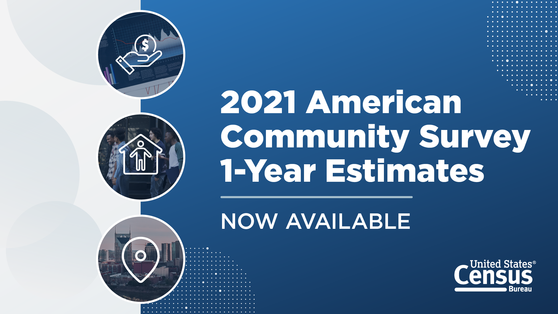📊 Updates You May Have Missed
The Census Bureau announced on Tuesday that real median household income in 2021 was not statistically different than 2020. The official poverty rate of 11.6% was also not statistically different between 2020 and 2021. The Supplemental Poverty Measure (SPM) rate in 2021 was 7.8%, a decrease of 1.4 percentage points from 2020. Meanwhile, the percentage of people with health insurance coverage for all or part of 2021 was 91.7% (compared to 91.4% in 2020.) An estimated 8.3% of people, or 27.2 million, did not have health insurance at any point during 2021, according to findings from the 2022 Current Population Survey Annual Social and Economic Supplement (CPS ASEC). That’s compared with an estimated 8.6% of people, or 28.3 million, who did not have health insurance at any point during 2020.
 |
 |
 |
Between 2019 and 2021, the number of people primarily working from home tripled from 5.7% (roughly 9 million people) to 17.9% (27.6 million people), according to new 2021 American Community Survey (ACS) 1-year estimates released on Thursday by the Census Bureau. Nearly half (48.3%) of workers in the District of Columbia worked from home, the highest percentage of home-based workers among states and state equivalents in 2021. In addition to the District of Columbia, states with the highest percentage of home-based workers were Washington (24.2%), Maryland (24.0%), Colorado (23.7%) and Massachusetts (23.7%). (These four states were not statistically different from each other.) 2021 marked the highest number and percentage of people working from home recorded since the ACS began in 2005.
 America Counts Stories and Blogs
During the past two years, Congress passed measures to improve access to public and private health insurance coverage during the COVID-19 Public Health Emergency including continuing coverage for people receiving Medicaid and introducing policies to help people access and afford the cost of care.
These and other federal and state policies contributed to an increase in public coverage in 36 states, leading to lower uninsured rates in 28 states in 2021. Only one state – North Dakota – had a higher uninsured rate in 2021 than in 2019, according to the Census Bureau’s 2021 American Community Survey (ACS) 1-year estimates.
More America Counts Stories
Related Blogs
Sharable Stats and Infographics
|